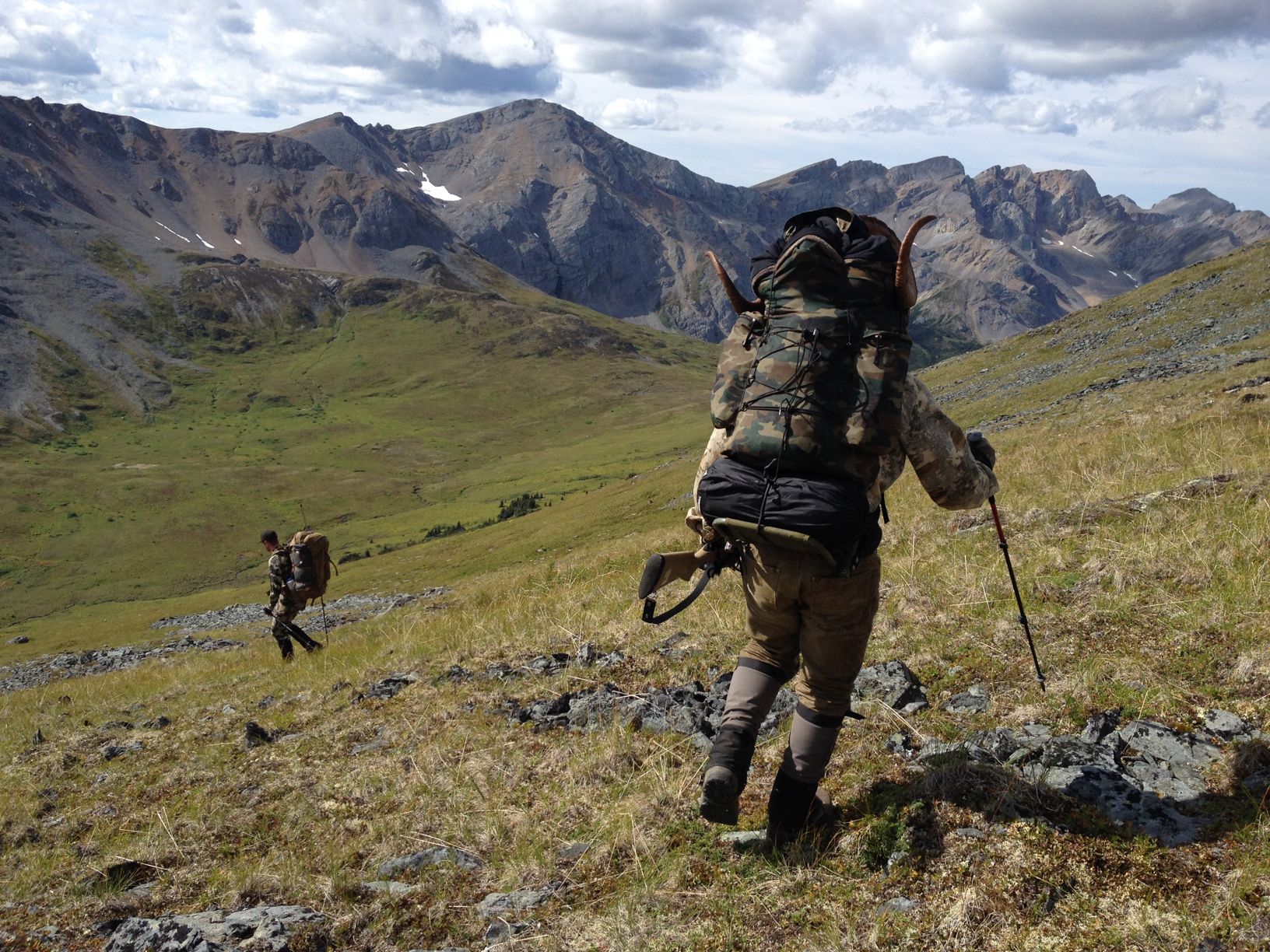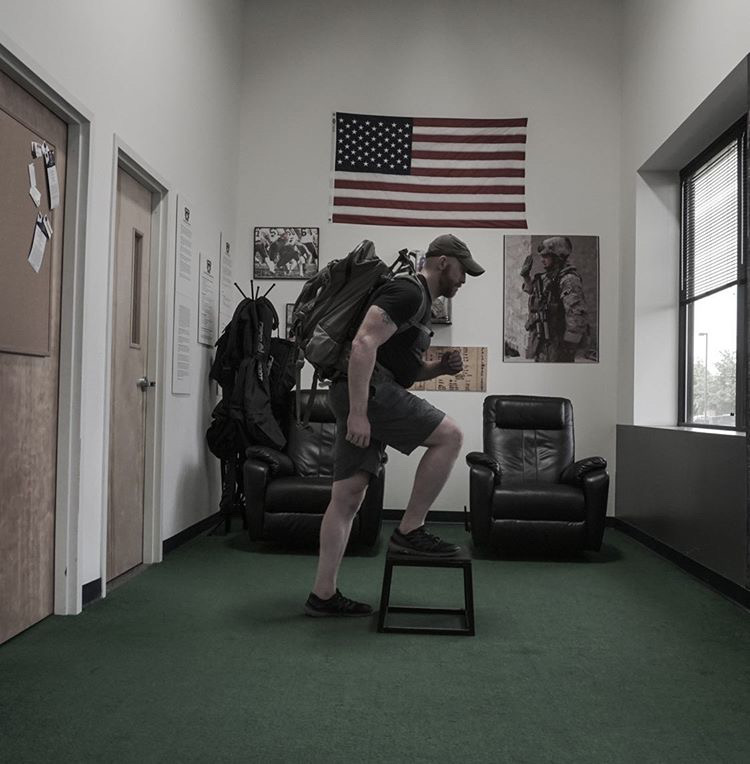After perusing hunting prep programs and talking to hunters from around the country about how they train in the offseason, I’ve found that there’s one commonly misused tool—the box step-up. Ladies and gents are strapping on their packs and doing endless amounts of box step-ups—sometimes for hours at a time—to prep for the rigors of the pack in and the pack out. I won’t say it’s a total waste of time, but there’s a much better method that will actually make you much fitter for the hunt—and carry over to the rest of life as well.
It’s called High-Intensity Continuous Training, and it’s the best way to apply box step-ups for hunting fitness.

High Intensity Continuous Training (HICT), A Brief Background
Here’s a quick and dirty energy systems and training terminology lesson. Aerobic means that the system uses oxygen to produce energy. Anaerobic means that the system doesn’t use oxygen to produce energy. When the word “intensity” is used in training, it means the difficulty of an exercise. For example, a heavy deadlift is more intense than a light deadlift. “Volume” denotes the amount of work you are doing.
If a training method works, it probably comes from Russia. That’s absolutely true of HICT. It was invented by Victor Seluyanov, a Russian physiological researcher and author, to improve the aerobic fitness of explosive athletes. These super explosive folks could throw amazingly far, jump incredibly high, or sprint incredibly fast. The problem was, they couldn’t be explosive for very long. They needed more endurance—when our fast-twitch muscles have greater aerobic capacity (i.e. when they are better at utilizing oxygen) our overall endurance improves. But since fast-twitch muscles are mostly used for quick, explosive movements, they usually weren’t, and still aren’t, the target of most aerobic training protocols. Seluyanov’s research, and resulting training methods, changed that.
He had athletes perform heavy, explosive reps at a slow pace, and over an extended period of work. The result? The aerobic capacity of fast-twitch muscles drastically improved. High-intensity Continuous Training was born.
HICT: What it Does and Why It’s Important for Hunters
HICT trains fast-twitch muscles to better utilize oxygen, meaning those muscle fibers are able to generate energy for a much longer time before fatiguing. Most fast-twitch muscle training is either heavy weightlifting for low reps or explosive movements like jumping or throwing. That type of training is definitely important, and has a place in a hunter’s training program, but it doesn’t fully develop the muscles’ capabilities. And while we need strength and explosiveness, they make us resilient and sturdy, they aren’t the most important qualities on the trail. Using strength over an extended period of time is much more important. HICT trains us to use our strength for more than just a few gym reps, keeping us marching up and down the mountain.
Mountains, in turn, have a lot of game, but they lack something else—oxygen. Hunting often takes us to lower-oxygen environments, especially if you’re an easterner that heads west to hunt. At lower oxygen densities, we need our bodies to be even more efficient at using the oxygen that’s available. Slow-twitch muscles naturally do that pretty well (that doesn’t mean you shouldn’t train them, too). But fast-twitch muscles need more training. That makes HICT all the more important for hunters.
HICT Box Step-ups: How to do Them
I’m not going to kid you, HICT is hard, grueling, and boring. But I also won’t kid you that it’s 100 percent worth it. Let’s talk performance. Get yourself a twelve to fourteen-inch box. A higher box is unnecessary as we want to be able to use the heaviest weight possible.
Your aim is to do one rep every four to five seconds, placing your whole foot in the center of the box, and one rep equaling one step-up with one leg. For the training to actually work, you need to use the heaviest weight that you possibly can while maintaining that pace. It will be zero fun…unless you’re somewhat into torturous training (I’m raising my hand along with you).
So, you’ll put as heavy a weight as you possibly can in your pack while still maintaining the one rep every four to five seconds pace. The rhythm goes: Up, Down..1, 2, 3…Up, Down…1,2,3…on and on for the entire duration of the set.
Here’s a video demonstration. That’s yours truly pounding them out in my gym:
I’ll repeat, the weight needs to be heavy for this to work. Also, each step up, especially if you’re using slightly less than maximum weight, needs to be performed as explosively as possible. If the weight is super heavy, you won’t move quickly—but the intent must be there for you to recruit as many fast-twitch fibers as possible.
There’s another consideration—your heart rate. It should be in the 150s to low 160s while you’re doing HICT. If it gets higher than that, you won’t be able to maintain the intensity you need and won’t get the benefit of your fast-twitch fibers learning to better utilize oxygen. A simple way to keep tabs on your heart rate is the “talk test.” If you can’t speak a full sentence without getting out of breath, your heart rate is too high.
If no matter what, you can’t maintain the proper pace without your heart rate jumping through the roof, you’re not ready for HICT and should be doing some lower-intensity aerobic training like easy hikes, bike rides, etc.
Naturally, the follow-up question is how long do I do HICT step-ups for and how frequently should I be doing them? I’ll be answering that question in part two of this series.
Conclusion
Want to make your box step-ups more effective? Do them the HICT way. In part two of this series we’ll get into a bit more detail about where HICT fits into your overall hunt fitness training program.
Bio
Todd Bumgardner, MS is an author, coach, and outdoorsman. He’s a performance coach for a Tier 1 tactical unit while also co-owning a gym (Beyond Strength Performance NOVA) and a mentorship program for coaches and trainers called Strength Faction. He splits his time between Northern Virginia and Central Pennsylvania, and when he’s not either of those places, he’s traveling to hunt or fish.





